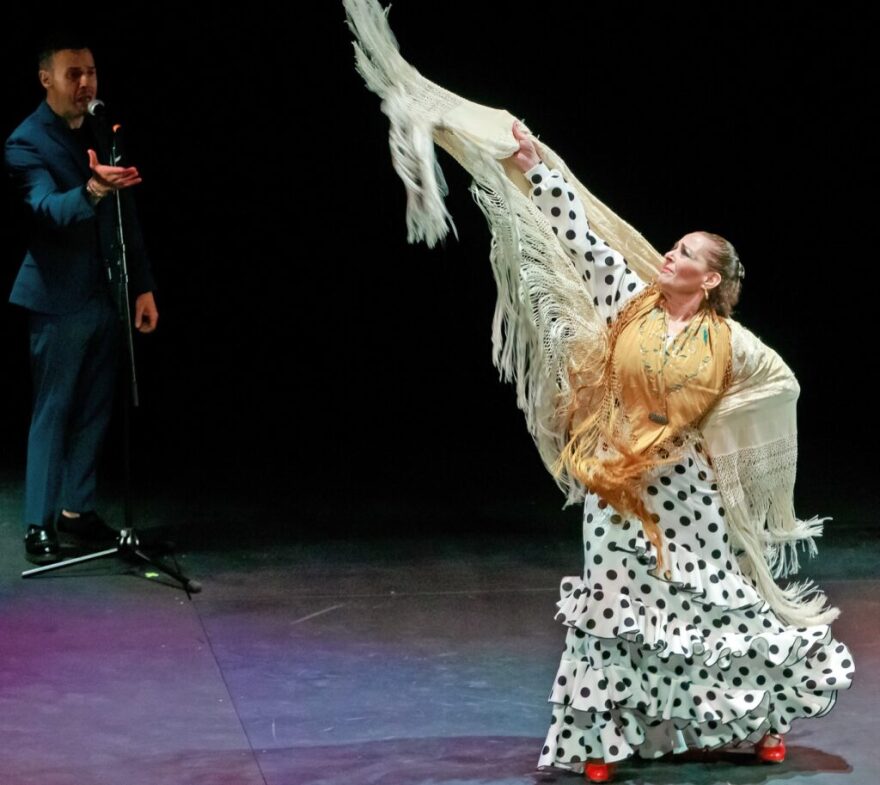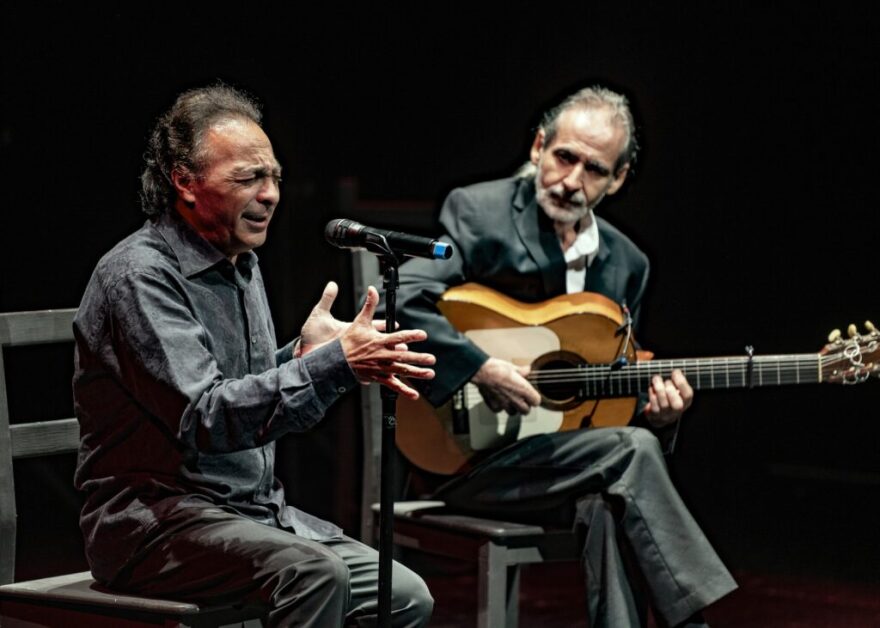vibrant Flamenco scene in the 1980s when many tablaos dotted the city. These flamenco venues originally developed during the 1960s throughout Spain replacing cabarets.
“I have wonderful memories of those times … I felt very much at home in Miami,” says Heredia, the daughter of Málaga-born singer Rafaela Reyes “La Repompa” and Madrid-born guitarist Luis Heredia.
“We made many Cuban friends, and I still have friendships there.” She lived in Miami with her parents for about four years before leaving for Mexico and eventually returning to Spain.
READ MORE: Intense bonds, fiery chemistry fuel the Flamenco Festival Miami XVI
Now known as “La Repompilla,” Heredia will have the chance to reacquaint herself with the city that launched her career at age 16 when she returns to Miami as a headliner for “Festival de Cante Flamenco” at the Adrienne Arsht Center from Friday, Sept. 5 through Sunday, Sept. 7.

The annual festival of flamenco song is now in its nineteenth year, a partnership between Siempre Flamenco and the Arsht Center.
In 2021, Heredia won the most prestigious flamenco singing award,The Lampara Minera, at the National Festival de Cante de las Minas in Spain, the most esteemed flamenco song festival in the world, making her one of the art form’s most sought-after singers.
But there was a time when “La Repompilla” was very shy.
“My mother was shocked when I told her I was going to be a singer,” she says. “I always liked to sing, but I was very embarrassed, and it was hard for me to sing publicly at first … now I don’t know how to live without flamenco.”
Heredia will sing three songs during “Cante Flamenco,” as will Guillermo Campos “Morenito de Illora” and Gabriel Georgio, “Gabriel de la Tomasa.” Campos is currently touring with legendary guitarist Tomatito, as well as with the Joaquin Cortes Flamenco Dance Company. Georgio is the son of renowned flamenco singer Jose de la Tomasa and serves as resident singer for the Spanish National Ballet.
Festivals of flamenco song are popular in the summers of Andalucia, Spain, but in the United States, this festival is one of a kind, presenting a unique opportunity for South Florida audiences to experience this gripping, traditional music with strong Moorish, Gypsy, and Jewish influences.
For those who already have a passion for flamenco dance, “La Repompilla” wants you to know that the origin of flamenco is song, first heard acapella alongside the rhythms of iron workers driving down their hammers.
“Then the guitar began to be incorporated, and dance followed,” says Heredia. “As a matter of fact, dance has no inspiration without a singer.”
Miami-based flamenco dancer, rising international star, and fellow Malagueña Irene “La Chiqui” Lozano agrees.
“Singing is the pillar on which flamenco dance is built. It is absolutely fundamental because it constitutes the soul and origin of this art,” she explains.
Lozano is the featured dancer in this year’s “Cante Flamenco.”
“Amparo is a great singer with whom I’ve had the pleasure of performing alongside of before, so it is always a joy and a pleasure to share the stage with artists of the caliber of this amazing singer, especially when she is from my homeland … I’m looking forward to being on stage with my Amparo again.”
Accompanying them is guest guitarist Jose Cortes who also hails from an acclaimed flamenco dynasty and is the son of singer Jose Cortes “Pansequito del Puerto.”
Siempre Flamenco founders Paco and Celia Fonta will join the ensemble with their guitar and dance respectively to complete this notable lineup of artists.

And when it’s over, you can still catch Lozano on weekends at Cava Flamenco in Little Havana, Miami’s only remaining authentic tablao.
“When not performing in other cities or countries, Cava Flamenco is my home and where you can find me performing with wonderful colleagues and professionals offering a very authentic flamenco show,” says Lozano.
Like Heredia, Lozano earned recognition at the National Festival de Cante de las Minas, winning the top global award for flamenco dance, the Desplante.
While dance and music are vital to flamenco, the festival showcases one of the pillars of the art form.
“Singing conveys the primary emotion — pain, joy, nostalgia, strength — and dance interprets and amplifies it through the body, establishing a constant dialogue between the two. Without singing, dance loses authenticity because it would have nothing to dialogue with or respond to,” says Lozano.
WHAT: Siempre Flamenco’s Festival de Cante Flamenco
WHERE: The Adrienne Arsht Center Carnival Studio Theater inside the Ziff Ballet Opera House, 1300 Biscayne Blvd., Miami
WHEN: 8 p.m. Friday, Sept. 5; 3 and 8 p.m. Saturday, Sept. 6; and 4 p.m. Sunday, Sept. 7.
COST: $55 general admission; $70 premium seating.
INFORMATION: 305-949-6722 or arshtcenter.org.
ArtburstMiami.com is a nonprofit news partner of WLRN, providing news on theater, dance, visual arts, music and the performing arts.





